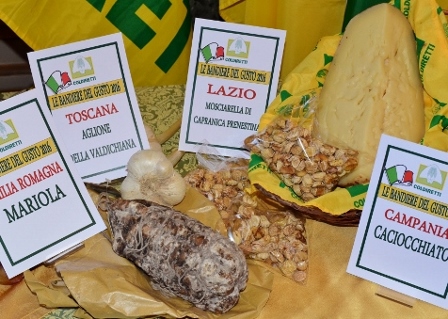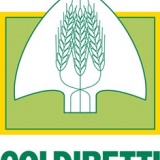
WTI Magazine #82 2016 August 19
Author : Coldiretti Translation by:
The dramatic incidents of international terrorism affect the choice of this year's holiday of more than one Italian in four (27%), but the percentage rises to 41% among young people between 18 and 24 where the tendency to move towards destinations abroad would be higher. It is what emerged from the analysis on the "Holidays Made in Italy" in the summer 2016 from which we highlight changes in the destinations, in recreation and in the distribution of spending.
The abandonment of destinations considered dangerous is really about international tourism as a whole with Turkey, Tunisia, Egypt in great suffering, but also France is distressed about the recent incidents in Paris and Nice. On the contrary there is an increase of foreigners who choose Italy as a safer country compared to the problems related to terrorism, with estimated arrivals from abroad increased by 1.8% between May and October. This year, nearly half of summer vacationers along the Peninsula will be foreigner with Germany, the US and France who climb on the podium in arrivals in our beautiful country, in descending order.
The issue of security is one of the factors that influence the destination of the holiday, but together with our history and culture, another real added value of the choice of staying in Italy is food. More than six out of ten foreigners (62%) while on holiday in Italy buys Italian food, a shopping that clearly beats the traditional souvenirs (50%), clothing (48%) and crafts (25%). The passion for food is transversal to all countries. Wine, cheese and olive oil made in Italy collect the interest of foreign tourists though with different expectations depending on the nationality. The appreciation for wine for example varies a lot with the Americans that particularly love Chianti, Brunello di Montalcino, Pinot Gris, Barolo and Prosecco.
Italy has become the world leader in food tourism thanks to 283 DOP / IGP specialties recognized at EU level and to the 415 wines DOC / DOCG; but we also win the green record with almost 50 thousand organic farms, the nearly 22 thousand agritourisms, the approximately 10 thousand markets and farms where to buy zero kilometers products directly by farmers and the many wine tasting tours, festivals and feasts of all kinds.
Tourists' spending for food and drink has never been so high, with about a third (32%) of the Italian and foreign budget on summer vacation in Italy dedicated for meals in restaurants, pizzerias, trattorias or farmhouses, but also to buy food and wine for a total amount estimated at about 12 billion €. The summer of 2016 will see a positive turnaround, with Italians returning to eat up 13% from last year to a total of 64% who attend restaurants, inns, farmhouses or pizzerias though it remains a significant 36% who eat mostly at home, by themselves or with their relatives and friends. Conviviality at the table becomes one of the main reasons of leisure time: 30% of the Italians believe that the success of the holiday depends mainly from the good food.
The data highlight a growing trend of Italians to express their tourist curiosity at the table experiencing different local dishes than usual. When they eat out on vacation, 3 Italians out of 4 (74%) ask for local products where they are, but there is also a hard core of 17% who want the same home cooking they are used to, while just a minority 7% feels at ease with international dishes. An attitude that rewards agritourisms, who will host more than 6.5 million visitors during the summer 2016, because of their excellent price/quality rate.
70% of Italians on holiday during summer 2016 will visit mills, pastures, wineries, companies, festivals, farms or farmers markets to buy local products at zero kilometers directly from manufacturers and optimize the price/quality rate but also to learn about the history, culture and tradition of the product and of the production. In many cases the sale is accompanied by the possibility of guided tastings, which allow you to make an informed choice better than anywhere else, but also to personally check the production processes in a typical natural environment of the countryside.
Holidays and "Taste flags"
The "Taste flags" assigned to Italy in 2016 on the basis of traditional food specialties on the national territory climb to the record number of 4,965. 79 products have been added since last year and went on to increase our the heritage of specialties that are obtained according to traditional rules protracted for at least 25 years, according to the sixteenth revised census of traditional food products of regions.
On the podium of the taste flags assigned to the regional level, this year rises Campania (486), with 29 new products: it wins the leadership bypassing Tuscany (460), while Lazio (396) consolidates the third place. Next come Emilia-Romagna (387) and Veneto (378), before Piedmont (336) and Liguria (294). Then the other regions: Calabria with 269 typical products surveyed, Apulia with 251, Lombardy with 247, Sicily with 242, Sardinia with 189, Friuli-Venezia Giulia with 163, Molise with 159, Marche with 151, Abruzzo with 148, Basilicata with 113, the autonomous province of Trento with 105, Alto Adige with 90, Umbria with 69 and Val d'Aosta with 32.
To prevail among the regional specialties are 1511 different types of bread, pasta and biscuits; 1394 fresh and processed vegetables; 786 hams, fresh meat and sausages of various kinds; 493 cheeses; 231 cooked meals or food products; 145 beverages including soft drinks, liqueurs and spirits; 160 animal products (honey, milk products excluding butter, etc.) and 157 fish preparations, molluscs, crustaceans.
Holidays and the food at the Olympic Games
The Olympics are a world stage for fake Made in Italy products, of which Brazil is a great producer: Parmesao to pomarola up to Milano salami throughout carioca. It is the alarm raised by the president of Coldiretti Roberto Moncalvo who showed live these examples together with the president of CONI Giovanni Malagò presenting the agreement with Casa Italia for Rio 2016 with the twitter hashtag #Riomangioitaliano.
With this agreement, the objective of Coldiretti during the games is to ensure a truly tricolor menu for the Italians athletes, but also to fight the rampant phenomenon of Italian sounding at the table that takes away market space to the real Made in Italy. On the shelves of supermarkets and restaurants in Brazil you can buy products and dishes that recall the most typical Italian foods without having any of the quality characteristics, security and ties with our country.
A deception in which are likely to fall even hundreds of thousands of fans from around the world who come to Brazil to follow the Olympics and which could cause serious economic damage to the image and the production of Made in Italy.
The goal is to introduce the distinctive features of the national food production that allowed Italy to win over the international leadership for safety, health, quality and environmental sustainability. The initiative focuses on the enhancement in the kitchen of the symbol of the Mediterranean diet Made in Italy, which for its proven benefits for health and sport has conquered the global tables.
The Italian athletes are ambassadors of the Italian quality in the world. The fake Made in Italy at the table manages worldwide about 60 billion euro, the equivalent to almost twice the value of exports of the original domestic food products. The international food piracy improperly uses words, colors, locations, images, names and recipes that falsely recall Italy, with fake products that have nothing to do with the national reality and brakes our export that in 2015 has reached a record of 36.9 billion euro.



